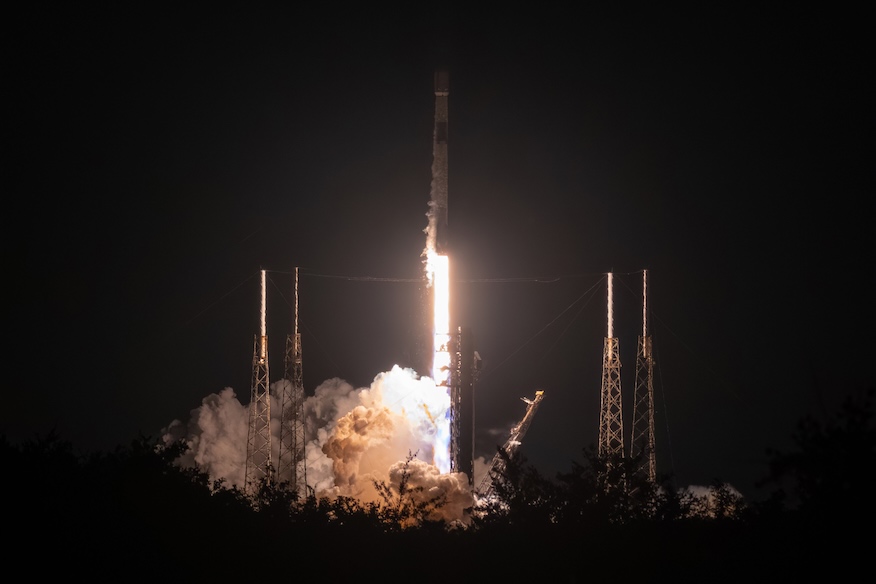
Update June 3, 3:12 p.m. EDT: The first stage booster successfully landed on the droneship.
SpaceX managed to launch its latest batch of Starlink satellites Tuesday morning following a scrub in the pre-dawn hours of Monday.
Liftoff of the Starlink 12-19 mission from Space Launch Complex 40 at Cape Canaveral Space Force Station happened at 12:43 a.m. EDT (0443 UTC) on Tuesday, June 3, as thunderstorms pushed offshore.
On Monday, the 45th Weather Squadron published a new launch weather forecast for this next launch opportunity. In it, meteorologists said SpaceX would be facing a 65 percent chance for favorable weather.
“A frontal boundary will linger across Northeast Florida through the next several days, bringing deteriorating weather with a deepening mid-level moisture pattern,” launch weather officers wrote. “Most daytime convection should be done by the time of the launch window Monday night, but some showers and anvil clouds may linger past midnight and beyond.
“The main concern for the initial launch window will be for cumulus clouds, surface electric fields, and anvil clouds.”
The possibility for lingering effects from thunderstorms was at play as well impacts from a Coronal Mass Ejection (CME) that erupted from the Sun on Friday and continues to impact Earth’s magnetic field.
The phenomenon, known as a geomagnetic storm, is continuously being tracked and evaluated by the National Oceanic and Atmospheric Administration’s (NOAA) Space Weather Prediction Center (SWPC) based in Boulder, Colorado.
As of its most recent update shortly before 8 a.m. EDT (1200 UTC), the storm was rated as ‘G3 Strong’ on the SWPC’s scale, which maxes out at G5. The agency warned of some potential effects to electronics on Earth and satellites in orbit, stating that the current impact is a “possible, slight risk of various satellite operations’ effects.”
— NOAA Space Weather Prediction Center (@NWSSWPC) June 2, 2025
However, the weather on Earth or in space didn’t appear to be the cause of the launch scrub in the overnight hours from Sunday into Monday. Had SpaceX been able to launch its Falcon 9 rocket, it would’ve been the second fastest turnaround time for SLC-40 to date and chances are, the launch teams just didn’t have everything in order in time to make that slot.
SpaceX used its Falcon 9 first stage booster 1071 to launch this mission, which made its 21st flight. It previously launched missions like NASA’s Crew-5, GPS III Space Vehicle 06 and a Cygnus spacecraft on the NG-20 mission for Northrop Grumman.
A little more than eight minutes after liftoff, SpaceX landed B1071 on the droneship, ‘Just Read the Instructions,’ positioned in the Atlantic Ocean. This was the 123rd landing for this vessel and the 456th booster landing to date.
Onboard the first Falcon 9 launch of June were 23 Starlink satellites, which include 13 that have direct-to-cell capabilities. To date, SpaceX has launched 635 of these DTC capable Starlink satellites.
source: spaceflightnow.com